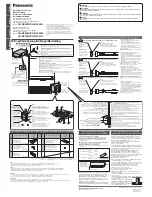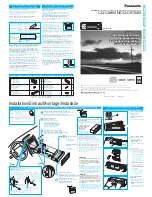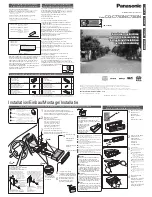
Non-Sound Decoder MX600 - MX634 and Sound Decoder MX640 - MX658 Page 49
CV
Designation
Range
INC-step
De-
fault
Description
#361
Switch gear sound
Playback delay
for ELECTRIC
engines
0
– 255
20
During rapid successions in speed changes the
switch gear sound would be played back too of-
ten.
CV #361: Time in tenths of a second (0
– 25 sec.)
defines minimum delay between multiple play-
backs.
#363
Switch gear sound
Dividing the speed
into shift steps
for ELECTRIC
engines
0 - 255
0
Number of shift steps to cover the whole speed
range; i.e. if 10 shift steps are programmed, the
switch gear sound is played back at internal
speed step 25, 50, 75… (a total of 10 times)
= 0: synonymous with 5 (5 switch steps over
the whole speed range).
#380
Manual electric brake
key
1
– 28
0
Defines a function key to manually control the
sound of a “dynamic” or “electric” brake.
#381
Electric brake -
minimum speed
0
– 255
0
The electric brake shall only be heard between
the value defend in
CV #381…
#382
Electric brake -
maximum speed
0
– 255
0
…and the value in CV #382
#383
Electric brake -
Pitch
0
– 255
0
= 0: Pitch independent of speed
= 1…255: …depends increasingly on speed.
#384
Electric brake
–
Deceleration
threshold
0
– 255
0
The number of speed steps to be reduced during
deceleration before the electric brake sound is
played back.
#385
Electric brake
–
Downhill
0
– 255
0
= 0: no effect at “negative” load
= 1
– 255: Sound triggered at “negative” load.
#386
Electric brake
–
Loops
0
– 15
0
Bit 3 = 0: Sound fades out at the sample end
= 1: Sound ends without fading at end
Bit 2
…0: Increases minimum playback time by 0
… 7 seconds, to prevent an interruption in break
sound between speed steps.
Coasting
and
Notching
functions are required for driving situations
where the correct engine sound
cannot be derived from speed, acceleration and load only.
Primarily in diesel locomotives (but not necessarily limited to diesels), the motor’s idle sound or a cer-
tain specified speed step sound is enforced by keystroke.
This method can be used for “downshifting” (often to neutral) as well as “upshifting” (i.e. elevated idle
for heating). Future software versions will expand this function to a fully independent sound effect.
CV
Designation
Range
De-
fault
Description
#374
Coasting-Key
(or Notching)
0 - 28
0
Function key that activates “Coasting“, which forces the motor
sound
to a specified speed independent of the driving situa-
tion. Define the (sound) step in CV #375 (often used for idle
sound while coasting).
CV
Designation
Range
De-
fault
Description
= 0: does NOT mean F0, but rather that NO key is assigned
for coasting.
= 1 ... 28: One of the function keys F1 … F28 for “Coasting“
#375
Coasting-Step
(or Notching)
0 - 10
0
Motor sound (speed) to be activated with the coasting key (as
per CV #374), independent of the driving situation.
= 0: Idle sound (typical coasting situations)
= 1 … 10: Sound speed (Diesel engines typically have 5 to 10
notches, which can be activated with the coasting key.
#398
Automatic Coasting
0
– 255
0
The number of speed steps the train’s speed has to be re-
duced within 0.5 seconds in order for the automatic coasting
effect to set the motor sound to idle (without assigning a
coasting key above). The motor sound will not return to idle if
the speed is reduced at a slower rate.
It is especially expedient for diesel engines to be able to
raise the sound step manually
with a func-
tion key.
CV
Designation
Range
De-
fault
Description
#339
Key for raising diesel
sound step
0 - 28
0
Function key that raises the diesel sound to the minimum
speed defined with CV #340.
See below if more keys for further speed raises are required.
#340
Diesel sound step
and possibly more
keys.
0 - 10
0
The minimum diesel step the sound is to be raised to with the
function key defined with CV #339.
This CV can be extended (to include more function keys (in
succession) by applying the formula:
Minimum speed step + (16 * (Number of keys -1))
5.8 Random and Switch Input sounds
#315
Random generator
Z1
Minimum interval
0 - 255
=
0 - 255 sec
1
The random generator generates internal pulses in irregular
intervals that are used to playback a sound file assigned to
the random generator. CV #315 defines the shortest possible
interval between two consecutive pulses.
Sound samples are assigned to the random generator Z1 with
the help of the CV #300 = 101 procedure, see above! By de-
fault, the compressor is assigned to Z1.
Special note to random generator Z1:
The random generator Z1 is optimized for the compressor
(which should be played back shortly after the train has
stopped); therefore the default assignment should be retained
or at the most be used for a different compressor. CV #315
















































